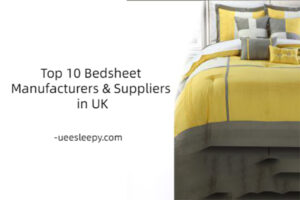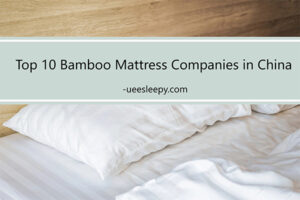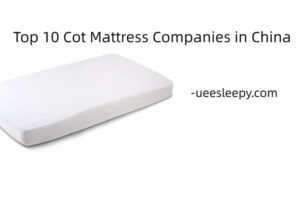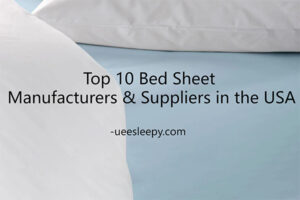With so many options available, shopping for new bedding can be confusing. Because a good bedding set can represent a significant expense, it’s important to know which brands you can trust. Choosing the right bedding brands can contribute to a more restful night’s sleep, and a high-quality sheet set can last for many years with proper care.
While it’s rare to find quality bedding at extremely low prices, a high price isn’t necessarily an indicator of quality. For shoppers willing to invest in bedding, it helps to understand how material type, weave, and thread count affect feel and performance. Knowing the principles behind organic and sustainable products can also explain why some bedding is more expensive than others and help you decide if they are worth the investment.
We’re taking a look at our favorite bedding brands based on materials, construction, and how they performed in our in-house tests. We’ll also provide information on sleep trials, shipping and warranty policies to help you find the best brand for your needs.
1. Bedding brands
The following are some of the best bedding brands.
1) Bedding Brands of Satva
The Saatva bedding collection includes duvet covers, quilts, sheet sets, and blankets. Crafted from a range of high-quality natural materials, this bedding set is built to last.
While Saatva is best known for its mattresses, it also makes bedding that performed well in our tests. Saatva has an extensive product line that includes Sheets, Blankets, Comforters, Duvet Covers, Comforters, Pillows, and Mattresses. The company focuses on natural materials, offering sheet sets made from organic and long-staple cotton, available in percale and sateen.
Percale is a single-ply, single-ply weave known for its crisp hand, and these sheets feature a 200 thread count and are designed for maximum breathability. In contrast, sateen is a silkier fabric that drapes gracefully. These sheets are a 300 thread count and should last a long time if cared for properly. In addition to the basic color scheme, shoppers can choose from banded and embroidered styles.
Saatva also sells sheet sets woven from responsibly sourced linen, a material known for its classic crinkled look and exceptional durability. Those who live in cooler climates may prefer a cotton flannel sheet set, which is designed with brushed fibers to trap heat and create a cozy, slightly plush feel.
Machine washable in cold water on a gentle cycle. Each sheet set includes a flat sheet, a fitted sheet, and a corresponding number of sized pillowcases. Most sheets are available for standard mattress sizes and split king sheets, which are able to fit mattresses up to 16 inches thick. Complete the bedding set with a percale, sateen, or linen duvet cover.
In addition to sheets, Saatva also sells a variety of knitted blankets, comforters, and duvets in lightweight, heavyweight, and year-round options. The company also makes a velvet-weighted blanket designed to relieve stress.
The product ships to the lower 48 states for free, and Saatva offers a 45-night sleep trial. The bedding is also backed by a one-year limited warranty against defects in manufacturing and workmanship.
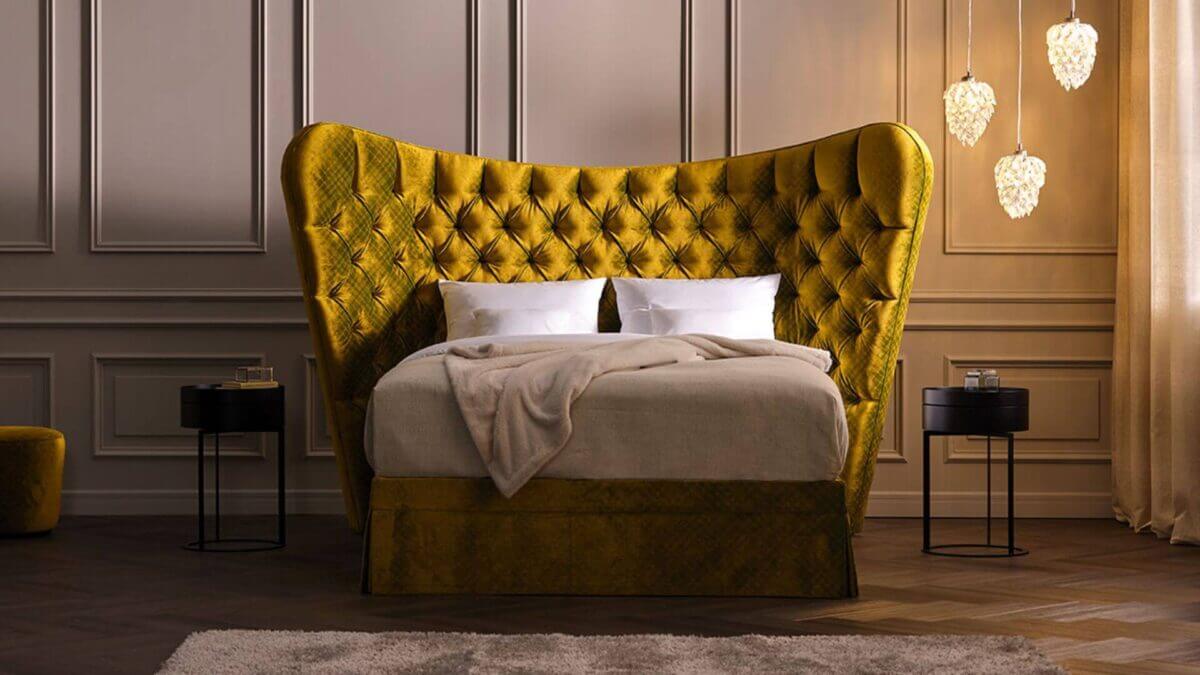
2) Bedding Brands of Quince
Quince sells sustainably produced bedding at affordable prices. The company supports sustainable resources, avoids the use of harmful dyes in its products, and strives to work directly with factories that treat workers fairly. Quince manufactures many types of sheets, duvet covers, quilts, pillowcases, and other bedding items.
Quince’s standard cotton sheets include sateen, percale, and flannel options. The satin collection has a silky feel and is crafted from 300-thread-count organic long-staple cotton. The crisp-handle premium percale collection is made from organic long-staple cotton with a thread count of 270. Quince also creates a hotel-inspired embroidered Italian percale sheet set in long-staple cotton and 200-thread count. For those who sleep in cooler climates, the flannel sheet set is brushed on both sides for added warmth and softness.
Alternatives to cotton bedding include bamboo viscose, Tencel, and linen. Sateen viscose sheets provide stylish cooling for sensitive skin sleepers. The jersey sheets are woven from Tencel, a lightweight material derived from wood pulp, and spun into the fabric using a process that minimizes water waste. The linen sheets are made from European linen and are pre-washed so they feel soft to the touch on first use. Mulberry silk sheets are also available at Quince.
Quince sheets come in a dozen natural-inspired colors as well as several understated striped designs. Most sheet sets are sold as twin, full, queen, king, and California king. Shoppers can choose from a complete sheet set (including a fitted sheet) or a fitted-only set. Both options come with a corresponding pillowcase based on the size chosen. The fitted sheet has a 16″ pocket and is thoughtfully labeled at the top and bottom.
Quince offers free shipping to all 50 states and a 365-night sleep trial, giving customers ample opportunity to make sure this bedding is to their liking.
3) Bedding Brands of Cozy Earth
Cozy Earth specializes in bedding, bath towels, and loungewear. The company’s products primarily feature bamboo viscose, a soft, breathable, and machine-washable fabric made from bamboo fibers.
In addition to the standard Bamboo Sheet Set, Cozy Earth also sells sheets made from a blend of linen and bamboo viscose. Linen is known for its durability but can feel a bit rough during break-in. Our testers found that combining linen with bamboo viscose imparted softness while allowing them to benefit from the breathability and durability of linen.
Sheets are available in Twin/Twin XL, Full, Queen, King, California King, and Split King sizes. Cozy Earth also sells crib sheets, crib blankets, and knitted baby blankets.
Cozy Earth offers each sheet set in a variety of different colors, including elegant classic colors. In addition to sheets, Cozy Earth also sells mattresses, pillowcases, duvet covers, and quilts filled with silk or bamboo viscose. Their line also includes silk pillowcases and silk pillows. All of these products demonstrate clear attention to detail and attention to quality.
Shoppers can purchase personalized bedding sets that include everything they need. The company offers free shipping and a 10-year limited warranty on the bedding. Cozy Earth also offers sleepers the chance to try the sheets at home for 100 nights.
4) Bedding Brands of Brooklinen
Brooklinen is one of the best-known bed linen suppliers online, and our tests have shown that they live up to their reputation. Brooklinen produces attractive and comfortable bedding and their current line includes percale, sateen, linen, flannel, and cashmere sheets. The company also offers pillowcases, weighted blankets, duvet covers, pillowcases, and comforters made with natural down and down alternative fill.
The crisp, percale cotton sheets are made from 270-thread-count long-staple cotton. Sateen sheets also use long-staple cotton and are 480 thread count, which bodes well for their durability. For sleepers who prefer linen sheets, Brooklinen offers a 145g version, made from European linen that is lightweight, breathable, and stonewashed for extra softness.
Pajamas for colder climates come in a variety of options, including brushed cotton flannel sheet sets or heathered cashmere sets in a soft cotton and Himalayan cashmere wool blend in a durable twill weave.
In addition to the basic colors, Brooklinen also offers striped sheets and limited-edition options adorned with abstract designs and brighter colors. Flannel sheets are also available in a variety of patterns.
Most sheet sets come in a standard mattress size and include a flat sheet, fitted sheet, and pillowcase. Brooklinen also offers large sets with extra shams and duvet covers. The duvet cover is labeled “long side” and “short side” and includes ties to keep the inner duvet from moving. All sheets are machine washable in cold water with like colors.
Brooklinen accepts returns for the first 365 nights of the sheet, after which the sheet will be covered for an additional one-year wear or tear warranty.
5) Bedding Brands of Sijo
In addition to pillows, mattress protectors, duvet covers, quilts, and sheet sets, Sijo also specializes in loungewear and bedding. Our testers found the Sijo bedding to be very soft and comfortable. Sijo currently offers three different sheet sets made from Tencel, Cotton, and Linen.
Tencel sheets are made from eucalyptus-derived fibers designed to wick away moisture from the body. Manufactured using environmentally friendly processes, Tencel is known for its smooth and silky feel. These sheets are silver ion antimicrobial treated and are certified allergy and asthma friendly by the Asthma and Allergy Foundation of America. These sheets are available in seven colors and all six standard mattress sizes.
The Cotton Collection sheets are made from long-staple Supima cotton infused with substances that help regulate temperature. Sets are sold in full, queen, king, and California king sizes, and shoppers can choose from four colors.
Sijo’s linen sheets are woven from French linen and stonewashed so they feel soft to the touch when first used. They’re available in full, queen, king, and California king sizes, and in seven different colors.
Sijo’s sheets are machine washable. Shoppers can choose to buy individual items, a sheet set with or without a fitted sheet, or a sleep-in set that includes a duvet cover and comforter. The brand produces pillows made from alternative down or Talalay latex, and duvet liners made from Tencel or alternative down.
For bedding purchased directly through Sijo, returns are accepted within 30 days of purchase as long as the sheets are not soiled or damaged. Sijo offers free shipping within the continental US on orders over a certain amount. Sheets can also be shipped to Hawaii, Alaska, and international locations for an additional fee.
6) Bedding Brands of Luxome
Luxome is best known for its line of comforters, throws, blankets, and weighted blankets, but the brand also makes high-quality towels, bathrobes, customizable pillows, and sheets.
Luxome’s luxurious sheet set is made from bamboo viscose in a smooth satin weave. The bamboo viscose is breathable, which our testers found helped maintain a comfortable temperature in both hot and cold climates. These sheets are 400 thread count and will resist pilling and damage if cared for properly.
Sheets are sold in six standard mattress sizes, as well as a split king size. Fitted sheets fit mattresses up to 17 inches thick, which is ideal if your mattress is thicker than average. Each sheet set includes a fitted sheet, flat sheet, and pillowcase to fit the size of the bed. Additional pillowcases can also be purchased for a fee. Luxome recommends machine washing sheets in cold water on a gentle cycle.
In addition to sheets, shoppers can spruce up their bedrooms with Luxome’s critically acclaimed blankets, including a blanket, a lightweight throw, and a thicker comforter. A memory foam pillow with a zippered cover allows sleepers to adjust the loft of the pillow, and a bamboo viscose cover keeps the pillow cool.
Luxome offers free shipping to the continental US and a 30-night trial period. The company also serves clients in Canada and abroad.
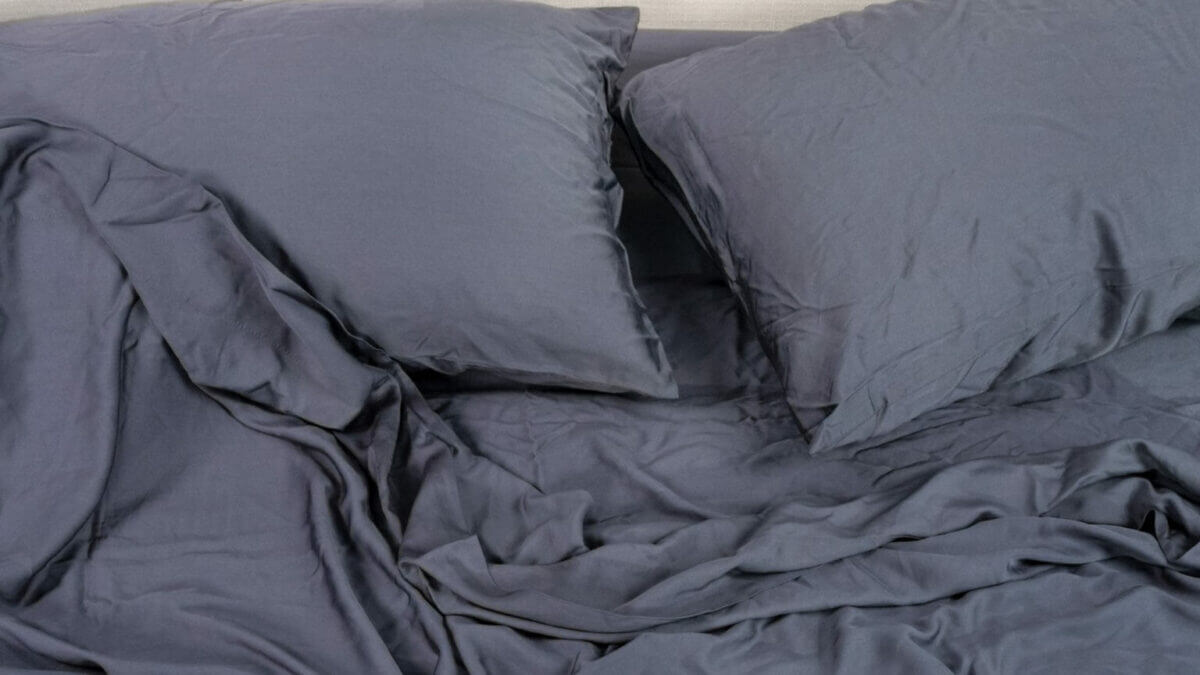
7) Bedding Brands of Bell & Branch
Since launching in early 2014, Boll & Branch has gained popularity for its organic bedding and bath linens. In addition to sheets, blankets, towels, robes, pillows, and other home essentials, the company now sells a variety of home decor items.
All sheets made by Boll & Branch are Fair Trade Certified. Cotton sheets are woven from Global Organic Textile Standard (GOTS) certified organic long-staple cotton. Long-staple cotton feels softer and less prone to pilling than regular cotton. The use of natural materials like cotton and linen also ensures breathability, helping to regulate the temperature in both cool and warm weather.
The Boll & Branch Signature Sheet Collection is crafted from smooth cotton with a satin weave for an elegant silky sheen. In addition to the Signature sheets, the company now offers sheets in crisp percale, triple-sheared Portuguese flannel, and Belgian linen that has been four garment washes. Boll & Branch also manufactures small batches of Reserve sheets made from ultra-premium cotton. Boll & Branch sheets are machine washable in cold water on a gentle cycle.
Shoppers can choose from bound, embroidered, patterned, solid, or color block designs in muted color schemes. The fitted sheet is fully elastic with top stitching to fit mattresses up to 17 inches thick. Other bedding exhibited similar attention to detail, and our testers found that was reflected in the bedding’s performance.
Boll & Branch sheets ship free to all 50 states and offer customers a 30-night sleep trial. For an additional fee, the company also ships to Canadian customers.
8) Bedding Brands of Pure Parima
Not all Egyptian cotton is created equal, Pure Parima uses select extra-long staple Giza cotton to guarantee the origin and quality of its sheets. Cotton is grown in the Nile Valley and certified by the Egyptian Cotton Association. In addition to sheets, the company also makes duvets, pillows, mattresses, and other bedding items.
Among the densest sheets we’ve tested are Pure Prima’s Triple Luxe Sateen Sheets. Made from a 700-thread count satin weave, these sheets have a super soft feel and just the right amount of warmth for comfort without being overly warm. The sheet features triple embroidery stitch detail.
The brand offers three additional sets of sateen sheets for a slightly lower price. Yalda features double hem stitching, while Ariane and Hira feature scroll and diamond embroidery motifs. All three collections feature a 400 thread count for a stylish, comfortable feel.
For sleepers in warmer climates, Pure Parima also makes the Ultra Percale Sheet Set. The layer-by-layer weave allows more air to pass through the fabric, helping to reduce heat build-up. These sheets also have a slightly lower thread count of 350, which enhances breathability without sacrificing durability.
Each sheet set comes with a fitted sheet, a fitted sheet, and a pillowcase to fit your bed. The fitted sheet is fully elastic with extra elastic straps at the corners for a snug fit to the mattress. Twin, Twin XL, and Full Fitted Sheets have 17″ pockets, while Queen and King have 18″ pockets.
Most sheet sets come in a range of muted colors as well as several bolder color options. Available sizes may vary by series. Sheets can be machine washed in cold or lukewarm water and lined to dry.
Pure Parima offers a 100-night sleep trial with free shipping to all 50 US states. The company also ships to Canada and select international destinations, but shoppers will incur additional shipping and customs fees.
2. Types of bedding
Bedding refers to the items that go on top of a mattress for warmth, comfort, and aesthetics. It can be classified by type of product or material.
1) By product
The types of bedding vary according to their function. We explain which products are classified as bedding, what they are used for, and what they are made of.
#1. Sheets
Sheets are usually sold as a set consisting of a fitted sheet, a flat sheet, and two pillowcases.
Fitted sheets cover the mattress by snugly fitting the bottom, usually thanks to elastic corners or edges. The mattress is protected and the surface is soft. The fitted sheet is over the mattress and acts as the sleeper’s first covering. The cover covers the pillow to keep it clean and provide a smooth surface.
#2. Pillows
Pillows provide support and cushioning for a sleeper’s head. They consist of padding wrapped in a fabric shell. There are many types of filling available, including cotton, down, feathers, down alternatives, memory foam, and latex. The filling, density, loft, and shape of your pillow can affect your sleeping experience. Buyers should consider their sleeping position and any specific conditions, such as chronic pain when choosing a pillow.
#3. Comforters and duvets
Quilts and duvets consist of large fabric shells filled with soft insulation. They are often used to keep sleepers warm during the colder months, although some are made from lighter, more breathable materials and can be used year-round.
Comforters are designed to be used as-is, while duvets consist of two parts: an insert and a cover. A duvet has a thick, insulating padding, similar to a comforter. Covers are usually made of thinner, easier-to-wash fabric.
#4. Blanket
The term blanket technically refers to any covering over a bed sheet, including comforters, duvets, quilts, comforters, sheets, and blankets. Their warmth and breathability depend on their material, thickness, and construction. A quilt, for example, consists of insulating filling between two layers of fabric. However, they have traditionally had less filling than quilts, so they are usually not as warm as quilts.
This category also includes specialty blankets such as weighted and heated blankets. Weighted blankets use heavier materials, such as glass or plastic beads, to apply pressure that some sleepers find soothing. Heating blankets plugin and provide extra warmth.
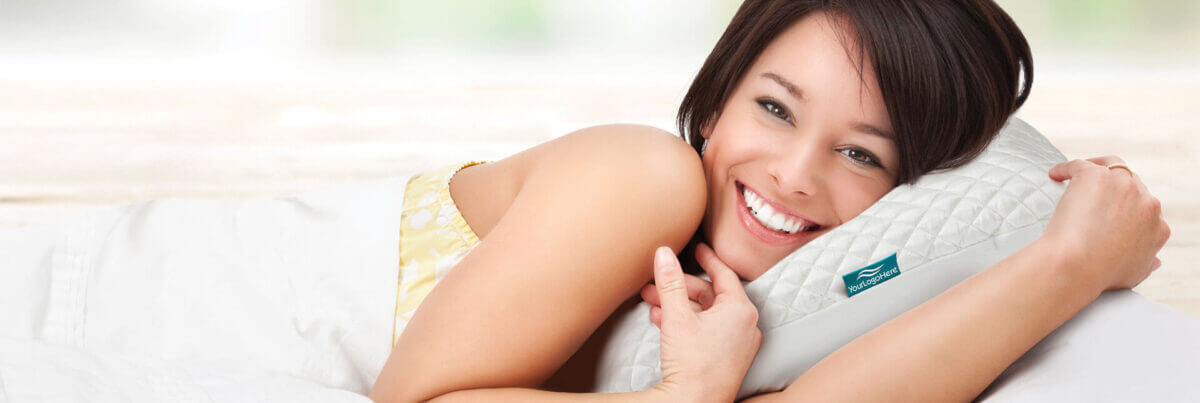
2) By material
Bedding can be grouped by material. A product’s material often hints at its underlying feel and performance.
#1. Cotton
Cotton is a popular choice for bedding because of its soft, breathable, and temperature-regulating properties. It can be used on sheets, pillows, blankets, and comforters. Manufacturers also sometimes blend cotton with other materials to reduce costs or improve performance.
Common types of cotton include regular cotton and extra-long staple varieties such as Pima cotton and Egyptian cotton. Organic cotton is any type of material grown and cultivated according to established environmental standards. Certification from the Global Organic Textile Standard (GOTS) or the United States Department of Agriculture (USDA) can verify organic claims.
#2. Down and Down Alternatives
Known for its cushioning, lightness, and insulation, down is the layer of tufts beneath the tough outer feathers of ducks and geese. Down comforters and duvet pads are often used as fillings due to their exceptional warmth, while pillows benefit from their softness and formability.
Down alternatives use cotton, semi-synthetic or synthetic materials to mimic the feel of down. Its insulation and flexibility are also often compared to the real thing. While down alternatives are generally less durable, they are often less expensive.
#3. Linen
Thanks to its breathability and moisture-wicking properties, this lightweight material is perfect for warmer temperatures. Linen, traditionally derived from the fibers of the flax plant, starts out clean and softens over time. It usually costs more than more common materials like cotton and polyester. However, it also tends to be very durable.
#4. Polyester
Polyester is a stain- and wrinkle-resistant synthetic fabric that is generally easy to care for. While 100% polyester bedding is available, the material is often blended with other fibers, such as cotton, to counteract its heat-absorbing tendencies. Polyester bedding is often more affordable, but its quality varies widely.
#5. Silk
This smooth, lustrous material has traditionally been associated with high-end bedding. In addition to an exceptionally soft hand, silk balances breathability and insulation to regulate temperature year-round. It is also one of the most expensive fabrics on the market and requires special care.
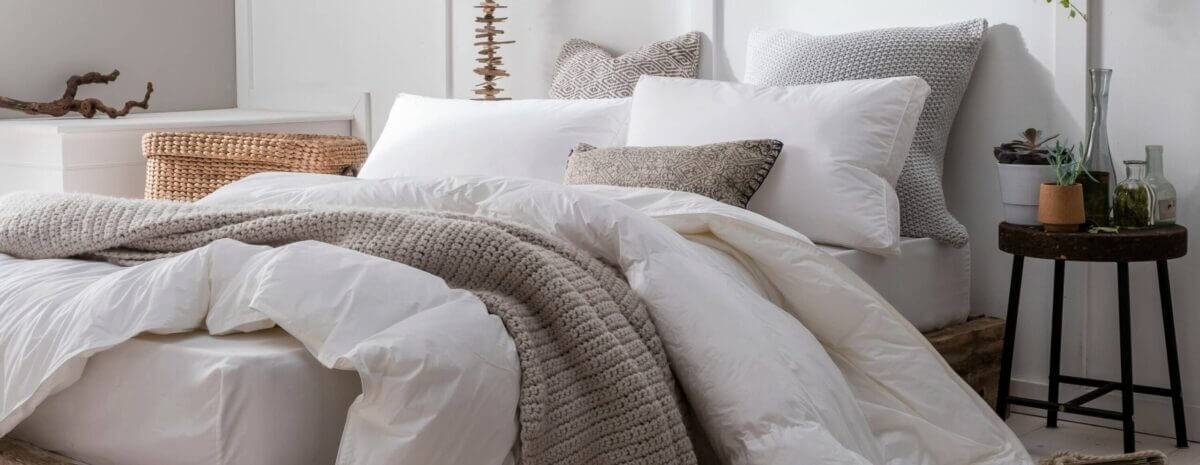
3. How to choose bedding brands
Bedding brands vary by factors such as quality, price, and selection. This means that buyers should consider various aspects related to their priorities and sleep needs.
1) Material quality
While there’s no definitive best material for bedding, companies using high-quality materials can often ensure a more durable and comfortable product. Fabric quality indicators usually include thread count and fiber length. Many manufacturers provide information about their material sourcing or have third-party certification for factors such as sustainability.
2) Size options
Most brands carry bedding in all standard sizes: Twin, Twin XL, Full, Queen, King, and California King. Sleepers with custom-sized mattresses or other less common sizes, such as Olympic Queen, Wyoming King, or Alaskan King, have fewer options. To get the right fit, they may need to order custom bedding.
3) Temperature regulation
Some materials regulate temperature better than others. Cotton, for example, allows heat to escape, which can be beneficial for heat sleepers. The fleece balances breathability and insulation, making it suitable for year-round use. Synthetic materials, on the other hand, generally absorb heat. Sleepers should consider the climate and how warm they will be overnight in order to choose bedding with the appropriate level of thermoregulation.
4) Price
Bedding can range widely in price, depending on factors like construction quality, material, and brand name. Even budget-conscious shoppers can often find solid bedding at a price they like. However, certain features, such as high-end or organic materials, often drive up the price. Shoppers shopping online should also consider any shipping costs.
5) Durability
Durability depends on material and construction. Lower-end bedding is often more prone to scuffing, pilling, and general wear and tear, so it might be worth paying a little more upfront for better durability. While price is often loosely correlated to quality, shoppers are also likely to evaluate materials, look for relevant certifications, and read reviews to gauge potential durability.
6) Design options
For the right fit, they may need to order custom bedding. Most shoppers prefer bedding that matches or complements their existing bedroom decor. Some brands offer a few basic colors or designs, while others sell dozens of colors and patterns. Buyers may also want to consider the material’s drape, texture, finish, and tendency to wrinkle.
7) Easy care
Ease of care varies by fabric, construction, and type of bedding. For example, most sheets are machine washable, but some pillows, comforters, duvets, and blankets require dry cleaning, spot cleaning, or hand washing. Even if larger comforters or duvets are machine washable, you may want to double-check that your home washing machine has a large enough capacity. Follow the manufacturer’s care instructions to keep bedding clean while reducing wear and tear.
8) Sleep trial, returns, and warranty
Some companies offer sleep trials, allowing buyers to use the product for a specified amount of time and return it if they are not satisfied. While sleep trials are common among mattress manufacturers, they are less common when it comes to bedding. Companies that offer sleep trials for these programs tend to run trials for anywhere from about 30 nights to a year.
Brands may also offer return policies. In some cases, these are related to sleep trials. However, once the product has been removed from the packaging or washed, the other return policies will not apply. Read the fine print to make sure you understand your options. Additionally, many manufacturers offer warranties that promise to repair or replace the product if a qualifying defect occurs within the warranty period.
It’s important to verify sleep trials, return policies, and warranties on bedding before purchasing. Also, be sure to note if the company charges any fees for returns or warranty claims.

4. Common questions
Deciding on bedding brands is no easy task considering so many factors. Buyers often have questions about aspects like cost and care and where to buy.
1) What is the best bedding brand?
The best bedding brands depend on shoppers’ needs and preferences. Brands differ greatly in terms of price, quality, design, materials, and performance. Ultimately, which option is best for you depends on your priorities.
2) How much should the bedding cost?
Cost depends on the quality, construction, material, size, and type of bedding. Queen sheets typically run between $50 and $300, with silk, linen, and organic or extra-long staple cotton usually pricier.
Comforters and duvets range in price from $75 to over $400. Those using synthetic materials usually cost the least. Pillows can cost between $40 and $200, with synthetic down alternatives often being the most affordable.
Since there are so many types of blankets, they come in a very wide range of prices. You can find synthetic blankets for under $10, but luxury comforters can easily cost upwards of $400.
3) Where is the best place to buy bedding?
Shoppers typically shop online for the best value and selection. This allows you to search for the best deals, compare your options and read reviews. In addition, some direct-to-consumer brands are only available online. Because they save on overhead by not selling at retail locations, these companies often pass the savings on to their customers.
Third-party online retailers also often sell bedding, though traditionally with a larger markup. Be sure to check shipping costs when ordering online. Many manufacturers and retailers offer free shipping, but some charge a fee.
While shoppers often prefer to find bedding online, anyone who needs to buy new bedding right away or wants to see it in person may prefer brick-and-mortar stores.
4) How often should I wash my bedding?
In general, sleepers should wash their sheets and pillowcases at least once a week. For duvet covers, usually, every two weeks to one month is sufficient. Comforters and blankets can be washed every two to three months. If your pillow is washable, it should be washed every four to six months.
5) What is the best bedding for a thermal pillow?
Sleepers who are prone to overheating should opt for lightweight, breathable bedding that promotes air circulation. Cotton is usually the fabric of choice, but linen, rayon or bamboo, Tencel, silk, and viscose from wool are also suitable for thermal pillows. Plus, many of these fabrics wick away moisture, so sweat evaporates faster.
How useful was this post?
Click on a star to rate it!
Average rating 5 / 5. Vote count: 1
No votes so far! Be the first to rate this post.

